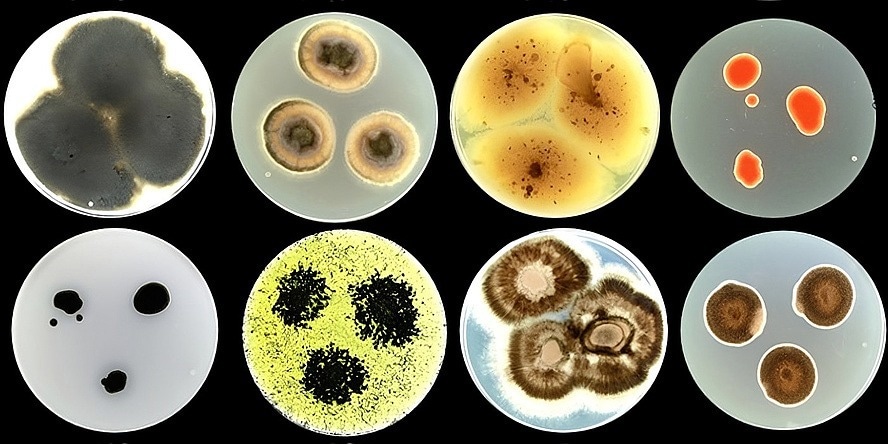A research team from Graz University of Technology has proposed a bold new concept that involves integrating selected microorganisms into façade coatings to create “living tattoos” for buildings. These microbial coatings not only bring walls to life visually and functionally, but they also offer environmental benefits like surface protection, carbon storage, and pollution filtration.
 A variety of fungal species isolated from building facades in the coastal city of Izola (Slovenia). Image Credit: Ana Gubenšek
A variety of fungal species isolated from building facades in the coastal city of Izola (Slovenia). Image Credit: Ana Gubenšek
Background
Traditionally, external building walls serve no function beyond structural integrity and design. But with roughly 9.4 billion square meters of roofs and façades in the European Union set for renovation or new construction over the next 25 years, researchers see a major opportunity to repurpose these surfaces in ways that benefit the environment.
By leveraging microbiological communities - self-sustaining groups of microorganisms - on walls and roofs, buildings could take on new ecological roles without using up valuable undeveloped land. This idea is gaining momentum globally, with multiple research initiatives underway.
One such project is “Archibiome tattoo for resistant, responsive, and resilient cities” (REMEDY), led by Carole Planchette from the Institute of Fluid Mechanics and Heat Transfer. Funded by the European Innovation Council, the project aims to incorporate microbial life into façades as a tool for urban resilience.
Methods
The REMEDY team is developing a “living ink” composed of specific microorganisms that can be applied to various exterior surfaces, including wood, concrete, and metal. The concept involves creating interkingdom microbial consortia - engineered communities that can maintain long-term stability on building façades.
These microbial ecosystems are designed not just to survive but to provide tangible benefits: resistance to harmful microbes, self-repair of minor surface cracks, carbon capture, oxygen generation, and pollutant breakdown.
A key challenge is ensuring the microorganisms can survive in printable form. Planchette has proposed an innovative ink formulation that preserves microbial viability while allowing for precise application via inkjet printing. Inkjet was chosen for its speed and control, making it ideal for customizable designs on building surfaces.
However, the physical size of the microorganisms - ranging up to several micrometers - presents a hurdle. They tend to clump into millimeter-scale clusters, which are far too large for standard inkjet nozzles, typically designed for nanoscale particles.
To address this, Planchette is working closely with Slovak inkjet manufacturer Qres Technologies and Austrian coating company Tiger Coatings to adapt both the ink and the printing technology. This collaboration is key to making microbial ink a viable, scalable solution.
Technological Vision and Collaboration
The REMEDY project aims to push the boundaries of microbiology and synthetic biology, integrating that knowledge into materials science to develop engineered living materials (ELMs). Just as importantly, it seeks to advance biofabrication techniques that can support personalized architectural design.
The four-year project brings together six partners from across the EU - Slovenia, Austria, the Netherlands, and Slovakia. These include Graz University of Technology, InnoRenew CoE, the University of Ljubljana, the University of Primorska, TIGER Coatings, Qres Technologies, and Xylotrade B.V.
Together, they’re working to create tailored microorganism-based inks and the specialized inkjet systems needed to apply them. If successful, this research could offer a new layer of function to urban architecture, making building surfaces not just smart, but biologically active.
Disclaimer: The views expressed here are those of the author expressed in their private capacity and do not necessarily represent the views of AZoM.com Limited T/A AZoNetwork the owner and operator of this website. This disclaimer forms part of the Terms and conditions of use of this website.